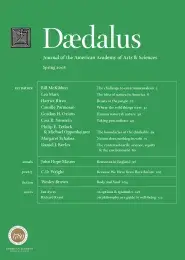Precautions & nature
All over the world, there is increasing interest in a simple idea for regulation of risk: In cases of doubt, follow the Precautionary Principle.1 Avoid steps that will create a risk of harm. Until safety is established, be cautious; do not require unambiguous evidence. In a catchphrase: better safe than sorry.
In ordinary life, pleas of this kind seem quite sensible, indeed a part of ordinary human rationality. It can be hazardous to interfere with natural processes, and we often refuse to alter the status quo because of a salutary fear of adverse side effects. Shouldn’t the same approach be followed by rational regulators as well? My central claim here is conceptual. The real problem with the Precautionary Principle in its strongest forms is that it is incoherent; it purports to give guidance, but it fails to do so, because it condemns the very steps that it requires. The regulation that the principle requires always gives rise to risks of its own–and hence the principle bans what it simultaneously mandates. I therefore aim to challenge the Precautionary Principle not because it leads in bad directions, but because read for all that it is worth, it leads in no direction at all. The principle threatens to be paralyzing, forbidding regulation, inaction, and every step in between. It provides help only if we blind ourselves to many aspects of risk-related situations and focus on a narrow subset of what is at stake. Protection of nature often makes sense, but the Precautionary Principle is not a helpful way of identifying when, and how much, protection of nature makes sense.
For those interested in precautions, the initial question is this: what exactly does the principle mean or require? There are at least twenty definitions, and they are not compatible with one another. We can imagine a continuum of understandings. At one extreme are weak versions to which no reasonable person could object. At the other extreme are strong versions that would require a fundamental rethinking of regulatory policy.
The most cautious and weak versions suggest, quite sensibly, that a lack of decisive evidence of harm should not be a ground for refusing to protect natural processes. Controls might be justified even if we cannot establish a definite connection between, for example, low-level exposures to humanly introduced carcinogens and adverse effects on human health. Thus the 1992 Rio Declaration states, “Where there are threats of serious or irreversible damage, lack of full scientific certainty shall not be used as a reason for postponing cost-effective measures to prevent environmental degradation.”
. . .
